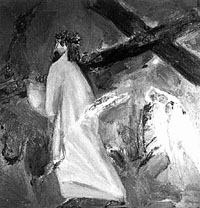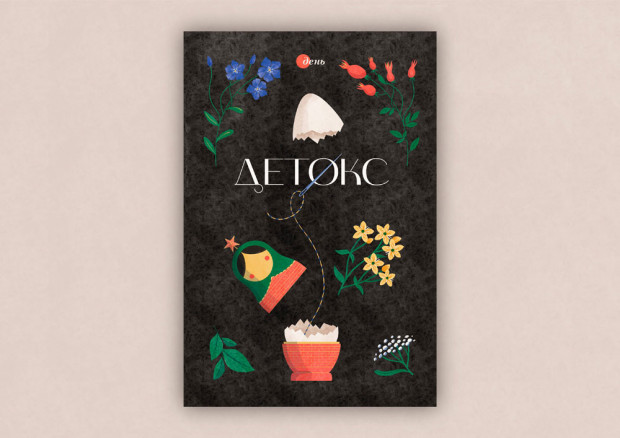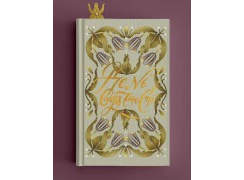The Sacred And Profane

A large exhibition called The Light of the Millennium has opened at the Persona Gallery, representing nine noted modern Ukrainian painters, sculptors, and enamelers that received professional training and made their names in Soviet times. “However, their creative legacy shows that no ideology can extinguish the magic spark in a creative soul bestowed with that inscrutable talent, which finally guides it to God. These artists are not monks or icon painters; they do not devote their works exclusively to religious themes. However, they have always been interested in things spiritual, in exalted problems embodying age-old traditions and the road to spiritual maturity. The eternal topics of love, hope, faith, wisdom, spiritual attainment, and self-sacrifice are reflected in their works with utmost creative mastery. This is tremendous work accomplished with the heart of each and everyone of them,” Lesia Avramenko, gallery manager, candidate of sciences in art, and exposition curator, says with conviction.
Borys Mykhailov spent ten years creating his great biblical series. His works inherently combine divine symbolism and convincing earthly realism. The best pictures of the series also reveal certain compositional melodious quality that are thrillingly festive (for example, The Good News, Mary and Elizabeth, and The Vintner Savior). Petro Malyshko makes icons on glass. As a professional artist, he has been able to not only reproduce, but also, and more importantly, preserve the sincerity, ingenuity, and sensuous saturation of folk art (e.g., The Mother of God in Grief). Nina Denysova’s canvases concentrate the age-old experience of religious art. Here one can discern allusions to folk art, the Ukrainian baroque, West European Renaissance (like Cranach’s Madonna Under an Apple Tree), Boichuk, and twentieth century artistic trends, yet these are components merging into a single purely individual style (as in Under an Apple Tree). Mykhailo Huida’s Carrying the Cross is permeated with genuine solemnity and picturesque beauty, as paradoxical as this might sound. The artist interprets one of the most tragic biblical scenes as a moment of enlightenment and revelation for all those who looked on. The minimal creative means utilized by Mykola Malyshko in his pictures proves enough to embody the innermost inherently enigmatic Christian notions (In Glory).
Oleksandr Borodai’s enamel triptych “Old Frescoes” is not just a masterful artistic reproduction of biblical events, but also a reflection on the destiny of art, on the eternity of genuine spirituality that can be governed by neither time nor earthly power. Tetiana and Serhiy Kolechko, an enamelist family from Kyiv, consider themselves Borodai’s pupils. Serhiy Kolechko’s triptych The Eyes of Old Temples are marked by deep concepts, voluminous images, and refined technique. Tetiana’s enamels are merry fairy tales, a series of endless marvel at miraculous occurrences (e.g., Christmas Eve).
Sculptor Anatoly Kushch is the author of numerous biblical works, most of which are not only singular works of art but also an extremely honest contemplation by a modern individual of various problems relating to Faith, Choice, Sacrifice, and Salvation. Among his sculptures on display the reliefs, Christ and Pontius Pilate and The Last Supper, warrant special note.
“Ukraine has been under the light of the Christian Idea for over a thousand years and this light shines even brighter in this new era,” says Lesia Avramenko, commenting on the title of the exhibit, with an epigraph borrowed from the Gospel of John: And the light shineth in darkness; and the darkness comprehended it not.






